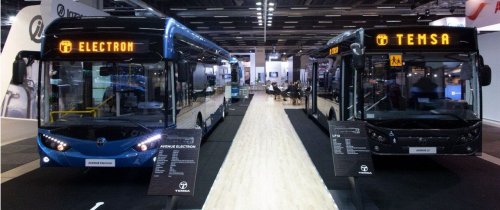Today, the issues of ecology and sustainable development are becoming increasingly important. Given Ukraine's likely membership in the EU and the conditions of a full-scale war, it is important to implement measures aimed at reducing the harmful impact of motor vehicles on the environment and saving resources, which, unfortunately, are exhaustible.
European Green Course: Ukraine's integration into the new environmental policy
The amount of CO2 in the atmosphere is increasing globally every year, while living ecosystems are shrinking and unable to fully absorb all the carbon dioxide produced by human activity.
The European Green Deal is the first step towards enshrining efficient resource consumption, reducing CO2 emissions, and equitable transformation for sustainable development and environmental protection in law. Among other things, the priorities include the development and increase in the share of electric transport and the development of a network of charging stations.
Europe is already actively moving towards creating climate-neutral content and is working on a policy to reduce CO2 emissions from the transportation sector. Its main idea is to reduce emissions from transportation by 90% by 2050.
Public transport is one of the most sustainable means of transportation (after bicycles, scooters, etc.). The more people use a trolleybus or tram, the less traffic jams and the less harmful emissions into the air, in addition, the energy consumption per transported person is reduced.
Therefore, for Ukraine, the development of public electric transport in parallel with the transition to renewable energy sources is a reliable way to reduce emissions in this sector. Even one new electric bus in Ukraine can reduce CO2 emissions into the atmosphere by 1,400 tons per year, and reduce fuel and maintenance costs for cities by 60% per year.
What is the experience of Poland useful for us
A successful example of urban electrification is the experience of Poland, which is already actively switching from traditional diesel buses to electric buses.
In 2020, almost 350 electric buses were already plying in Polish cities, and in 2021 – 615 electric buses for the transportation of passengers.
Over the course of a year, they almost doubled the number of city electric vehicles, which is 5% of the entire fleet of city buses in the country. Ukraine is only at the beginning of this path.
Environmental advantages of electric buses
In addition to problems with air pollution, the expansion of private transport in cities leads to the complication of traffic and the formation of traffic jams.
Local authorities of Ukrainian cities that have adopted plans to reduce greenhouse gas emissions as part of the Agreement of Mayors can modernize their fleets with electric vehicles with the support of credit programs. This contributes to the transition to environmentally friendly transport solutions and the preservation of the environment.
As of 2023, 103 cities that have joined the Covenant of Mayors have already developed Sustainable Climate and Energy Action Plans (SEACAPs). The signatories of the Agreement in Ukraine committed to reduce CO2 emissions by more than 25 million tons per year, which is equivalent to more than 1 trillion trees, which must be planted to absorb the equivalent of CO2 emissions. 198 mayors have declared that they aim to achieve climate neutrality by 2050, which will be a significant step towards climate conservation.
Switching to electric transport will help fulfill these obligations. For example, an electric bus does not release harmful gases into the atmosphere and does not pollute the air, provided that its energy source is renewable or decarbonized.

*According to the calculations of the company "Auto-Region"
How communities can save millions of hryvnias
About 53,000 buses engaged in public transportation were officially registered in Ukraine for 2020.
If we talk about the share of electric buses in at least 20%, then this will lead to savings of about ≈ 100 billion hryvnias in 10 years.
"Electrification of city transport is not only ecological, but also economic in nature. If we look at the cost of refueling and servicing one passenger bus in the perspective of 10 years, taking into account inflation and the increase in fuel and electricity prices, we have a savings of about 9 million hryvnias on just one vehicle," emphasizes Krystyna Bratchikova, head of the marketing department. AUTO-REGION".

*According to the calculations of the company "Auto-Region"





